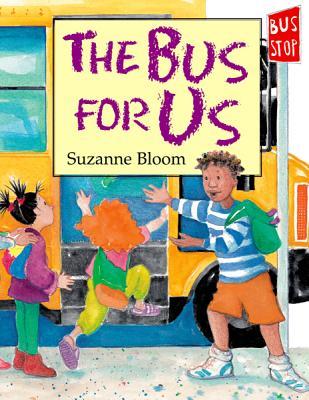Story Time Theme – PA’s One Book, Every Young Child
 Each year, Pennsylvania highlights the importance of early literacy skills for children ages 3 – 6 by choosing a book that is then distributed to libraries, head start programs, child care centers, and preschools. Author visits, a traveling trunk with fun manipulatives and toys and activities and booklists to share with families with young children. This year’s choice was an older story written by Suzanne Bloom called The Bus for Us. This story works really well for 2 and 3 year olds with simple questions and the every popular transportation theme. For more information about Pennsylvania’s One Book, Every Young Child initiative, check out the website.
Each year, Pennsylvania highlights the importance of early literacy skills for children ages 3 – 6 by choosing a book that is then distributed to libraries, head start programs, child care centers, and preschools. Author visits, a traveling trunk with fun manipulatives and toys and activities and booklists to share with families with young children. This year’s choice was an older story written by Suzanne Bloom called The Bus for Us. This story works really well for 2 and 3 year olds with simple questions and the every popular transportation theme. For more information about Pennsylvania’s One Book, Every Young Child initiative, check out the website.
Opening
- Traditional: Put Your Hands Up In the Air & Open Shut Them
- Yoga: Warm-up (Rock n Roll, Zip up Spine, Deep Breaths, Cat/Cow, pounce from child pose (lunge forward, Dog)
Book 1: Preschool to the Rescue by, Judy Sierra
Transition
- Traditional: 5 Little Monkeys Jumping on the Bed
- Yoga: Sun Salutations (Mountain, Reach Up, Touch the Ground, Hands at Knees (flat back), Plank Pose, Downward Facing Dog, Walk Toward Hands, Repeat)
Book 2: Down by the Station by, Jennifer Riggs Vetter
Transition (changes weekly)
- Traditional: Ridin’ In My Car
- Yoga: Core Strengthening (Cobra (hover hands), Whale, Bow, Ball, Boat Pose)
Book 3: The Bus for Us by, Suzanne Bloom
Closing
- Traditional: Shake Your Sillies Out Puppet Show
- Yoga: Cool-down (Bridge, Happy Baby Pose, Star Pose/Deep Breaths)
- Asian Dreamland (Putumayo Kids)
- Namaste
Early Literacy Extras:
PA One Book, Every Young Child is an established program that falls under basic literacy. So why is basic literacy important? According to PaLA:
- Only 48% of parents read to their children.
- Source: Russ, S., Perez, V., Garro, N., Kuo, A. A., Gershun, M., Halfon, N., & Zuckerman, B. (2007). Reading across the Nation: A chartbook. Boston, MA: Reach Out and Read National Center. Retrieved from www.healthychild.ucla.edu/ROR/ROR_Chartbook_2007.pdf
- The majority of children with functionally illiterate parents become illiterate themselves.
- Source: Rivas, P. (1997). Volunteers are working to eliminate illiteracy. Retrieved from www.villagelife.org/news/archives/func_illiterate.html
- A child’s library use raises 4th grade assessment scores.
- Source: Lance, K. C., Rodney, M. J., & Hamilton-Pennell, C. (2000, February). Measuring up to standards: The impact of school library programs and information literacy in Pennsylvania schools. Retrieved from www.eric.ed.gov/PDFS/ED446770.pdf
- If 50 first-graders have trouble reading 44 of them will have reading problems in the fourth grade.
- Source: Juel, C. (1998). Learning to read and write: A longitudinal study of 54 children from first grade through fourth grades. Journal of Educational Psychology, 80 (4), 437-447.
- By age 3 children from privileged families have read 30 million more words than children from underprivileged families. The 3-year-old measures predict third grade school achievement.
- Source: Hart, B., & Risley, T. R. (2003, Spring). The early catastrophe: The 30 million word gap. American Educator, 27 (1), 4-9.